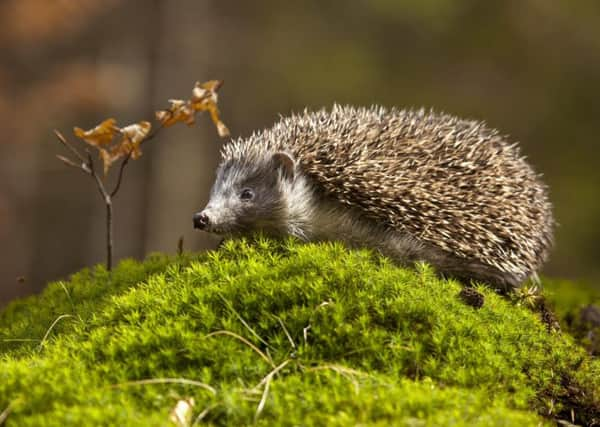'˜Time is running out' to save our hedgehogs


But it seems that fewer and fewer of us have seen a hedgehog in our garden, according to a new survey which suggests further decline in numbers of the prickly ones.
Just 29 per cent of people taking part in this year’s annual wildlife survey for BBC Gardener’s World Magazine had seen a hedgehog in their garden in the last year, down from 32 per cent the previous year.
Advertisement
Hide AdAdvertisement
Hide AdAnd just under half, 48 per cent, have never seen a hedgehog in their garden.
Peter and Jacqui Morrell have a fully functioning ‘hogspital’ in their Ripon home.
Since November 2014, they have taken in around 170 injured or poorly hogs, successfully releasing around 74 per cent into the wild.
The Morrells are currently caring for 14 animals, and rely on donations and the wages from their full time jobs to care for the hogs.
Advertisement
Hide AdAdvertisement
Hide AdMr Morrell said the drop in sightings mirrored the “significant” drops in hedgehog populations over recent years.
There are now thought to be less than a million hedgehogs in the UK - down from an estimated 36 million in the 1950s, and down 30 per cent since 2003 alone.
“There has been significant decline, but we’re doing out little bit to help,” he said.
“Twenty years ago you would regularly see hedgehogs dead at the side of the road but you don’t even see that much any more. There simply aren’t the numbers.”
Advertisement
Hide AdAdvertisement
Hide AdJust one in then of those surveyed said they regularly saw a hedgehog in their gardens - but most would be keen to help save the species.
Quizzed on which one UK species they would like to save from extinction, more than half (52 per cent) said hedgehogs, beating other at-risk British species such as the sparrow, puffin, mistle thrush and hairy footed bumblebee.
It would be very unusual to see a hedgehog in daylight hours - usually that would suggest they were in trouble, Mr Morrell said - but there are ways to encourage the nocturnal creatures to your garden at night.
He said: “Hedgehogs are solitary creatures and keep themselves to themselves. Even if you were to see a nest in the wild you wouldn’t think it was anything more than a bunch of leaves.
Advertisement
Hide AdAdvertisement
Hide Ad“Putting a six inch hole in your garden fence will encourage them, as will having a bird feeder - they won’t eat the seeds but will be attracted to the insects around the bottom. But make sure there are no slug pellets in your garden, as they will kill hedgehogs, and are part of the reason for the huge decline in numbers.”
Lucy Hall, BBC Gardener’s World editor, said: “The much-loved, humble hog is among gardeners’ most appealing natural allies, but they’re disappearing on our watch.
“And yet a few simple steps, from leaving out the right food, to opening up gaps in fences and creating secluded areas for nesting and hibernation, will help make our gardens the havens that hedgehogs have long enjoyed. If we act collectively now, we can still help save the species for future generations, but time is running out.”